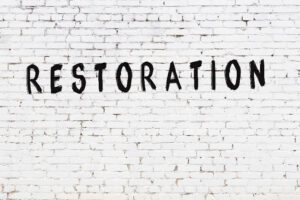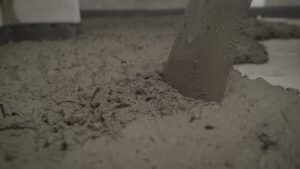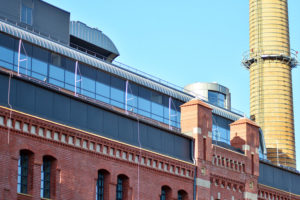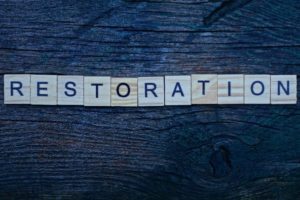Category: Restoration
Why Connecticut Masonry Restoration Services Are the Best

Building restoration is necessary when there are permanent cracks or plastic deformations in the structure, resulting from strong stresses that led to the overcoming of the elasticity limits of the material and the appearance of plastic deformations. The structure passes from its state of equilibrium to a state of new post-elastic equilibrium.
Masonry restoration has as main objective the static improvement of the behavior of the structure, using compatible materials and reversible processes.
The application of various consolidation methods using hidden elements has proved, in time, not to be always effective, achieving the preservation of the overall appearance of the building, but not its structure.
The results of the analyses performed on old buildings rehabilitated using new techniques and materials led to the conclusion that the efficiency of modern techniques decreases with the passage of time, sometimes leading to results with negative effects.
In this context, restoration can be tricky. If you think the building you live in is not safe, Connecticut masonry restoration services are your best choice. Specialists have the necessary expertise to thoroughly examine the structure and condition of the building and to determine the best solution for its restoration. The consolidation methods used for the purpose of restoring the superstructure of a building made of masonry include making injections in the depth of the wall, partial rebuilding of some masonry portions, framing the gaps in the walls with elements made of reinforced concrete, or coating one side or both sides of the walls.
Building Restoration vs. Renovation – Do You Know the Difference?

Renovating a home or a building takes a lot of effort and often requires the presence of many different types of experts and contractors who will perform their assigned work. Building restoration, on the other hand can be very different. Even though the two terms sound similar – and to some extent are similar – there are still many important differences that we need to be aware of regarding them.
Renovation typically focuses on external appearances and functions. If your building’s paint has faded, its roof has suffered damage over the years or the siding needs replacing, then you can find building restoration contractors who can deal with every one of these issues quite effectively, and you can plan them as part of your overall renovation activities.
On the other hand, building restoration focuses more on the most practical aspects of the building’s durability. If there are foundation issues, or the building has suffered structural damage, then you have to call in the pros to evaluate the problem and take care of it. This is a far more crucial aspect of taking care of your building, since any structural issue can lead to dire consequences, injuries and loss of property. So it’s a given that you also need to make entirely sure that you only hire the most experienced and overall best building restoration professionals that are out there.
Is Advanced Concrete Restoration in Connecticut Needed for Older Buildings?

Concrete and reinforced concrete are the most popular and safe construction materials nowadays. Concrete manufacturers state that, under optimal conditions, their products can have an infinite lifespan. However, certain environmental conditions (rain, ice or chemicals in the air), in the presence of poor concrete quality, with structural defects, can affect the integrity of the concrete structure.
This is why advanced concrete restoration in Connecticut is needed for older buildings.
Concrete is a composite material, consisting mainly of cement, water, and aggregate. Its properties depend on its exact components and on multiple technical factors. The anticorrosive effect it has on reinforced steel is thanks to the high alkalinity of concrete, which forms a protective layer. However, with time, concrete hardens, and carbonation appears: the structure becomes prone to corrosion because of physical or chemical factors.
All concrete structures require systematic inspections and maintenance. When you identify signs of damage, you need to diagnose them. This includes analyzing the documentation of the initial project, assessing the impact on the environment, temperature and humidity factors and examining the structure itself. Based on these, you can locate the areas where the most advanced carbonation manifests itself, assessing the condition of the concrete and the level of its neutralization. Next, you need to check the armature, in the places where the steel elements are exposed. All these steps help you to figure out precisely the level of corrosion and the estimated lifespan of the structure. Finally, you can choose the best method of repair with the help of https://nemasonry.com .
The Advantages of Building Restoration vs. Rebuilding

In most cases, it’s better to restore than to rebuild. That’s what New England building restoration experts will tell you when you ask them what the best option for your building might be. Rebuilding takes longer, and it will lead to the loss of many of the qualities and much of the historic value that the building held in the past.
If you’re looking for context and better insight on what the actual evidence supporting restoration would be, the following points should be considered very carefully:
- Right off the bat, rebuilding is far more costly than building restoration. When it comes to restoring a building, the materials and labor involved, as well as the time required will be far less, and the work can be done much more easily.
- Restoration allows you to keep the building’s history intact. If you simply need a building that has the right functional characteristics, this isn’t going to be an advantage. However, in terms of property value and the context of preserving historic buildings, it can be an invaluable benefit to be able to restore rather than rebuild.
- Building restoration allows for continuity. If you’re in a place where people value their historic landmarks, then tearing down an old building isn’t going to work to your advantage. However, restoration might be a good option.
Will Your Building Become Unstable Without Proper Building Restoration?

Building restoration refers to increasing the resistance of a construction through an intervention that aims to strengthen the foundation and the masonry. It can also be completed by renovation works, in order to modernize the building.
Any construction will eventually reveal structural problems, as the time goes by, due to earth movements, weather and factors that wear out different parts of it (e.g., improper renovation works). Without the safety of a solid base and structure, a building loses its stability and becomes a risk for people who live or work on the premises, but also for nearby buildings and passers-by.
Therefore, even disused buildings, especially if they are located in crowded areas, require periodic consolidation works to prevent accidents or even disasters. Pieces of such a building (plaster, decorative elements or bricks) can fall unexpectedly, and, in the event of an earthquake, the building itself may collapse, damaging surrounding buildings or causing other accidents.
If the building restoration specialists estimate that a building needs restoration, the works must be started as soon as possible. Currently, specialized construction companies can consolidate buildings shortly, without compromising on the quality of the works, so people living or working in there will not have to leave their home or office for a long time.

















